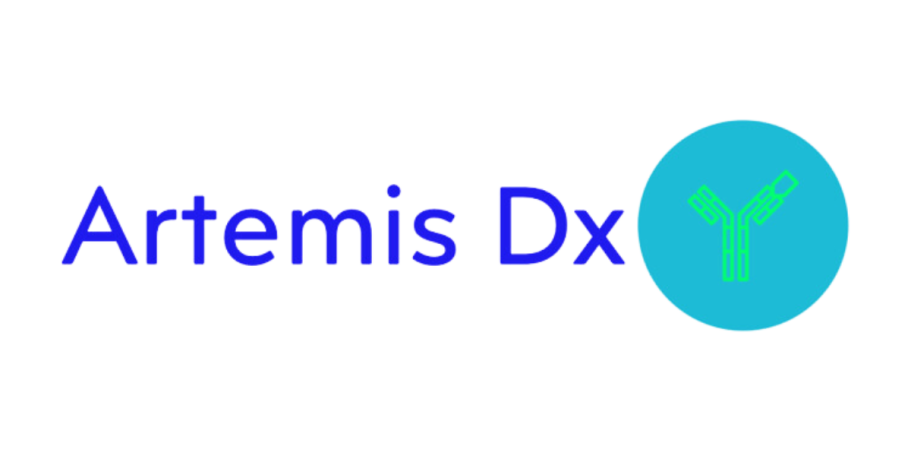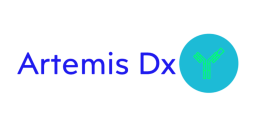Europium Particles in Lateral Flow Assays
By Hans Boehringer and Robert Hudak, Artemis Dx
Introduction to Lateral Flow Assays (LFAs)
Lateral Flow Assays (LFAs) are a well-established technology to provide rapid diagnostic tests that are widely used for the detection for many different analytes, including pathogens, biomarkers, and other substances of interest. The simplicity, portability, and cost-effectiveness of LFAs have made them popular in point-of-care testing, especially in resource-limited settings. Typically, LFAs are based on the principle of immune-chromatography, where antibodies or antigens are immobilized on a nitrocellulose membrane, and the sample flows laterally across the membrane to produce a visual signal, usually a colored line.
Traditionally, the most common labels used in LFAs have been gold nanoparticles, which produce a visible red line when they accumulate at the test and control zones. Advances in nanotechnology and material science have led to the development of alternative label particles, including polymer particles and cellulose nanobeads. Traditionally those particles are also colored and produce visible lines in various different colors. Alternatively, fluorescent europium-doped microspheres have gained attention for their superior sensitivity and versatility in LFAs.
Europium-Doped Particles: A New Paradigm
Europium is a rare earth element known for its strong fluorescence properties. When doped into microspheres, europium offers a unique advantage in LFAs by providing fluorescent signals that can be visualized in a lateral flow reader or by using a UV (blue – 365 nm) light. These particles consist of a polymer matrix, typically polystyrene microspheres, in which europium ions are embedded. The fluorescence of europium-doped microspheres is characterized by sharp emission peaks with a large “Stokes’ shift”, and long fluorescence lifetime, making them highly suitable for sensitive detection in LFAs.
Synthesis and Characterization
The synthesis of europium-doped microspheres typically involves emulsion polymerization, where monomers like styrene are polymerized in the presence of europium salts. This process results in uniform, spherical particles with sizes ranging from tens to hundreds of nanometers. The size of the particles can be controlled during synthesis to optimize their performance in LFAs.
Characterization of these particles involves techniques such as dynamic light scattering (DLS) for size distribution, scanning electron microscopy (SEM) for morphology, and fluorescence spectroscopy for assessing the intensity and stability of europium’s emission. The particles are commercially available and surface-functionalized with a variety of reactive chemical moieties, including carboxylic acids or amine groups through which antibodies, antigens, or other biomolecules can be covalently immobilized to enable specific binding to the target analyte.
Advantages in Lateral Flow Assays
- Enhanced Sensitivity: The fluorescent signal provided by europium-doped microspheres is much more sensitive than the visual signal from traditional gold nanoparticles or other visual labels. In fact, studies have shown an increase in analytical sensitivities of 20 to 100-fold in many systems. This is particularly advantageous when detecting low-abundance analytes, where conventional LFAs might fail due to insufficient signal intensity.
- Quantitative Analysis: While traditional LFAs are mainly qualitative or semi-quantitative, europium-doped microspheres enable quantitative analysis. The fluorescence intensity can be measured using a portable fluorescence reader, allowing for precise quantification of the analyte concentration in the sample.
- Multiplexing Capabilities: The sharp and distinct emission peaks of europium can be used in multiplex assays, where multiple analytes are detected simultaneously. By using particles doped with different fluorescent dyes, each emitting at a different wavelength, it is possible to distinguish between different analytes on the same LFA strip.
- Long Shelf Life and Stability: Europium’s fluorescence is known for its stability over time, which contributes to the long shelf life of LFAs using europium-doped microspheres. This is a critical factor for diagnostic tests, especially in remote or resource-poor settings where storage conditions might not be optimal.
Applications in LFA Diagnostics
Europium-doped microspheres have been applied in various fields, including infectious disease diagnostics, environmental monitoring, and food safety testing. Some specific applications include:
- Infectious Disease Detection: LFAs using europium-doped microspheres have been developed for detecting pathogens like influenza, SARS-Cov2, RSV, Strep A, HIV, and malaria. The increased sensitivity allows for early detection of infections, which is crucial for effective treatment and containment.
- Cardiac Biomarkers: In emergency medicine, the rapid and accurate detection of cardiac biomarkers such as Troponin I is essential for diagnosing heart attacks. Europium-doped microspheres provide the necessary sensitivity to detect even low levels (e.g. pg/mL) of these biomarkers, improving patient outcomes.
- Environmental Monitoring: These particles are also used in LFAs for detecting environmental contaminants like heavy metals and pesticides. The ability to quantify low concentrations of pollutants is vital for ensuring environmental safety and compliance with regulatory standards.
- Food Safety: In the food industry, europium-doped microspheres are used to detect pathogens like Salmonella and Listeria, as well as allergens and toxins. The high sensitivity of these assays ensures that contaminated products are identified before reaching consumers.
Challenges and Considerations
While europium-doped microspheres offer numerous advantages, there are some challenges and considerations to be addressed:
- Intellectual Property: The use of europium-doped microspheres in lateral flow assays has been described and is patented in US Patent 9,274,056 (Hudak, Buchanan). Licensing for the development and commercialization of europium-based LFA’s in the United States is available (Contact: bhudak@artemisdx.com ).
- Cost: The production of europium-doped microspheres can be more expensive than traditional labels like gold nanoparticles but are similar to colored polymer particles. However, the increased sensitivity and quantitative capabilities can offset these costs by reducing the need for repeat testing and improving diagnostic accuracy.
- Instrumentation: The use of europium-doped microspheres requires a fluorescence reader, which adds complexity and cost to the testing process. Advances in portable and affordable fluorescence readers are mitigating this issue, making these assays more accessible.
- Optimization of Assay Conditions: The performance of LFAs using europium-doped microspheres depends on the optimization of various factors, including particle size, surface chemistry, and fluorescence intensity. Additional assay optimization of the test strip chemistry will also be required. Thus, careful assay development is required to ensure that these factors are balanced for reliable and reproducible results.
- Regulatory Approval: As with any diagnostic tool, LFAs using europium-doped microspheres must undergo rigorous validation and regulatory approval before they can be commercialized. Ensuring that these assays meet the safety and efficacy requirements, the necessary standards for sensitivity, specificity, and reproducibility is essential for their success in the market.
Future Perspectives
The future of LFAs using europium-doped microspheres looks promising, with ongoing research and development focused on improving their performance and expanding their applications. Some potential future directions include:
- Integration with Digital Health: The combination of LFAs with digital health platforms, such as smartphone-based readers and cloud-based data analysis, could revolutionize point-of-care diagnostics. Europium-doped microspheres, with their quantitative capabilities, are well-suited for integration into such systems.
- Personalized Medicine: As personalized medicine becomes more prevalent, there will be a growing need for highly sensitive and specific diagnostic tools. Europium-doped microspheres could play a key role in developing LFAs that are tailored to individual patients, providing real-time data for personalized treatment plans.
- Environmental and Agricultural Applications: Beyond healthcare, europium-doped microspheres could find increasing use in environmental and agricultural monitoring. The ability to detect trace levels of contaminants or pathogens with high sensitivity could help address global challenges related to food security and environmental sustainability.
- Advanced Multiplexing: The development of more advanced multiplexing techniques using europium-doped microspheres could enable the simultaneous detection of multiple biomarkers with unprecedented accuracy. This would be particularly valuable in complex diagnostic scenarios, such as identifying co-infections or monitoring multiple disease markers.
Conclusion
Europium-doped microspheres represent a significant advancement in the field of lateral flow assays, offering enhanced sensitivity, quantitative capabilities, and the potential for multiplexing. These particles are poised to expand the applications of LFAs beyond traditional boundaries, enabling more accurate and reliable diagnostics in various fields. As research and development continue, the integration of europium-doped microspheres into point-of-care testing could lead to improved healthcare outcomes, better environmental monitoring, and enhanced food safety. Despite the challenges, the future of europium-doped microspheres in LFAs appears bright, with the potential to transform the landscape of rapid diagnostics.
Opportunities
One of Artemis Dx's co-founders is the inventor and patent holder of europium-doped microspheres used in LFAs. With years of expertise in these particles, we provide customized development services for lateral flow assays employing europium-doped microspheres.
For inquires on development services contact Hans Boehringer, Ph.D., CSO; hans.boehringer@artemisdx.com.
Contact for Licensing: Robert Hudak, COO; bhudak@artemisdx.com
We need your consent to load the translations
We use a third-party service to translate the website content that may collect data about your activity. Please review the details in the privacy policy and accept the service to view the translations.

